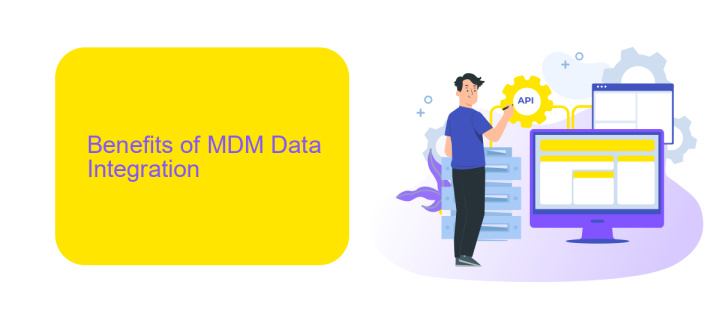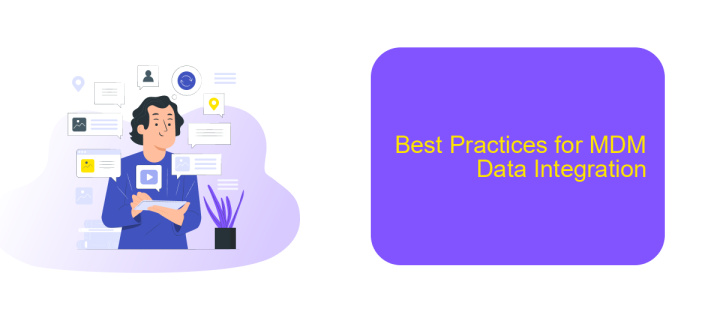MDM Data Integration
Master Data Management (MDM) Data Integration is a crucial process for ensuring consistency, accuracy, and reliability of data across an organization's various systems. By integrating data from multiple sources, MDM helps create a single, unified view of critical business information, enabling better decision-making, improved operational efficiency, and enhanced customer experiences. This article explores the key aspects and benefits of MDM Data Integration.
MDM Data Integration Overview
MDM Data Integration is a crucial aspect of managing and maintaining the consistency, accuracy, and reliability of master data across various systems and applications. It ensures that all data sources are synchronized, enabling seamless data flow and improved decision-making processes.
- Data Synchronization: Ensures that data across different systems is consistent and up-to-date.
- Data Quality: Enhances the accuracy and reliability of master data.
- Data Governance: Facilitates compliance and data management policies.
- Scalability: Supports the growing data needs of an organization.
Tools like ApiX-Drive can significantly simplify the process of MDM Data Integration. ApiX-Drive offers a user-friendly interface to connect various data sources without requiring extensive technical knowledge. By automating data flows and integrations, it helps organizations maintain data consistency and quality across all platforms, ensuring that master data remains a single source of truth.
Benefits of MDM Data Integration

Master Data Management (MDM) data integration offers numerous benefits, enhancing the overall efficiency and accuracy of data across an organization. By centralizing data from various sources, MDM ensures consistency and reliability, which is crucial for informed decision-making. This unified data approach reduces redundancies and discrepancies, leading to improved data quality and operational efficiency. Furthermore, MDM facilitates better compliance with regulatory requirements by maintaining accurate and up-to-date records.
Implementing MDM data integration can be streamlined with tools like ApiX-Drive, which simplifies the process of connecting different data sources. ApiX-Drive offers seamless integration capabilities, allowing businesses to automate data synchronization without the need for extensive coding. This not only saves time but also reduces the risk of errors associated with manual data handling. By leveraging such services, organizations can focus on strategic initiatives, knowing that their data management processes are robust and reliable.
Challenges of MDM Data Integration

Master Data Management (MDM) Data Integration presents several challenges that organizations must address to ensure seamless operations. These challenges can significantly impact the efficiency and accuracy of data management processes.
- Data Quality: Inconsistent data formats and inaccuracies can hinder integration efforts, leading to unreliable insights.
- Scalability: As organizations grow, their data volume increases, requiring scalable solutions to manage this growth effectively.
- Complexity: Integrating data from various sources can be complex, requiring robust mapping and transformation processes.
- Security: Ensuring data security and compliance with regulations is critical, especially when dealing with sensitive information.
- Cost: Implementing and maintaining MDM systems can be costly, necessitating careful budget planning and resource allocation.
To overcome these challenges, organizations can leverage integration platforms like ApiX-Drive. This service facilitates the automation of data integration processes, ensuring high data quality, scalability, and security. By using such tools, businesses can streamline their MDM efforts, reduce costs, and enhance overall efficiency.
Best Practices for MDM Data Integration

Effective MDM data integration is crucial for maintaining data consistency and accuracy across various systems. To achieve this, it's essential to follow best practices that ensure seamless integration and management of master data.
First, establish a clear data governance framework that defines roles, responsibilities, and processes for data integration. This framework should include data quality standards, data stewardship, and data lifecycle management to ensure data integrity.
- Utilize robust data integration tools like ApiX-Drive to automate data synchronization between systems.
- Implement data validation and cleansing processes to maintain high data quality.
- Ensure real-time data updates to keep all systems current and accurate.
- Regularly monitor and audit data integration processes to identify and resolve issues promptly.
By adhering to these best practices, organizations can streamline their MDM data integration efforts, resulting in improved data accuracy and operational efficiency. Leveraging tools like ApiX-Drive can significantly enhance the automation and reliability of data integration processes, ensuring that master data remains consistent across all platforms.


Trends and Future of MDM Data Integration
The landscape of MDM Data Integration is rapidly evolving, driven by advancements in technology and the increasing need for seamless data management. One of the emerging trends is the integration of artificial intelligence and machine learning to enhance data accuracy and predictive analytics. Companies are also focusing on real-time data integration to ensure that their master data is always up-to-date, which is crucial for making informed business decisions. Additionally, cloud-based solutions are becoming more popular, providing scalable and flexible options for businesses of all sizes.
Looking to the future, the emphasis will likely be on interoperability and the use of APIs to facilitate smoother data exchanges between disparate systems. Services like ApiX-Drive are at the forefront of this trend, offering automated workflows and easy-to-configure integrations that save time and reduce errors. As more organizations adopt these tools, we can expect to see a more unified and efficient approach to MDM Data Integration, ultimately leading to better data governance and more strategic insights.
FAQ
What is MDM Data Integration?
Why is MDM Data Integration important for businesses?
What are the challenges associated with MDM Data Integration?
How can businesses automate MDM Data Integration?
What factors should be considered when choosing an MDM Data Integration tool?
Apix-Drive is a universal tool that will quickly streamline any workflow, freeing you from routine and possible financial losses. Try ApiX-Drive in action and see how useful it is for you personally. In the meantime, when you are setting up connections between systems, think about where you are investing your free time, because now you will have much more of it.

